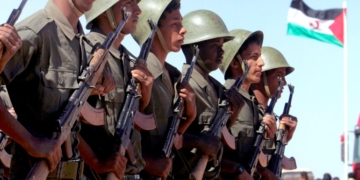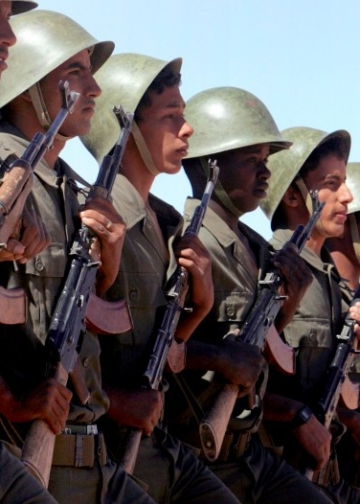By Ibrahim AlJabin
Damascus witnessed, for the first time in its history, a mass gathering of such magnitude as it did on the Friday Syrians dubbed “Victory Friday.” This momentous occasion marked the final overthrow of Assad’s regime. Bashar al-Assad fled, and the regime’s military and security apparatus crumbled. Streets and squares overflowed with celebrants waving the green independence flag, chanting triumphantly. But the pressing question remains: is the mission complete?
The mission is far from over. The Syrian revolution, one of the most significant, enduring, and costly uprisings in modern history, did not ignite merely to topple an existing regime. Its ultimate goal is to establish a new system grounded in justice, modernity, development, and civilized values.
But before proceeding, we must ask: what transpired on December 8th? How did the revolution achieve victory, and how was power transferred?
No one can credibly argue that international efforts or UN Security Council resolutions brought down Assad’s regime. The regime consistently refused to implement Resolution 2254 and waged aggressive—not defensive—warfare against revolutionary forces to its very last breath. This culminated in a decisive operation labeled “Deterrence Against Aggression,” which inflicted a military defeat on the Assad regime.
If the fall of Assad wasn’t a result of negotiation or resolution enforcement, then what took place on December 8th can only be described as a military victory—essentially, a 100% successful coup d’état. Unlike negotiated settlements, a coup leaves no room for the ousted regime to participate in implementing a political resolution like 2254. So, why should such a resolution even remain relevant at this stage?
This is easy to say, but its practical implementation is far more complicated. Disregarding 2254 would mean forfeiting a globally recognized roadmap that promises genuine power-sharing in forming a transitional governing body. Yet, many argue that the resolution has lost its significance, given the collapse of the Assad regime, which was a key party to it. Is there still a need to adhere to it?
However, a military coup has its own constitutional and legal frameworks, particularly in a sovereign state. At minimum, this requires issuing a constitutional declaration to suspend the current constitution, remove the deposed president, dissolve the parliament, and appoint a new government to manage the transitional phase. These steps are the bare essentials for legitimizing the new ruling authority.
Looking at the situation in Syria, neither of these two scenarios—negotiation or constitutional declaration—has occurred. This begs the question: what is the nature of the current political framework?
Syria’s new administration does not wish to govern under the doctrine of “rule by the victorious.” It must also recognize that, by raising the green independence flag with three stars, Syrians are signaling their allegiance to the 1950s constitution. This flag represents an actual republic with established institutions, sovereignty, and a parliament. Why, then, does the leadership repeatedly assert that the “form of the state” will be determined later?
The answer lies in the ideological framework of Hay’at Tahrir al-Sham (HTS) and the vision it now holds as it assumes authority. HTS leader Ahmed al-Shar’a (Abu Mohammed al-Jolani) has demonstrated a willingness to evolve—not merely for pragmatic reasons but as part of a genuine desire to modernize and reform religious discourse.
The Arab Contact Group’s Aqaba Declaration reiterated the importance of adhering to Resolution 2254, reflecting the cautious yet welcoming stance of Arab states observing developments in Syria. These countries, as previously noted, neither wish to see the rise of an Islamic emirate nor envision a democratic republic in Syria.
UN Special Envoy Geir Pedersen recently visited Damascus and met with HTS leader al-Shar’a. The resulting statement from Syria’s new political leadership revealed a call to reevaluate Resolution 2254, focusing instead on Syrian unity, reconstruction, and a cautious approach to transitional phases. The leadership also emphasized rehabilitating state institutions to build a strong and effective system, while creating a safe environment for refugee return.
Amid these developments, questions arise about the relevance of opposition institutions such as the Syrian Opposition Coalition, the Negotiation Commission, and the Interim Government. Al-Shar’a’s meeting with Pedersen, during which he expressed openness to considering the UN resolution while calling for its amendment, highlights the role these institutions might play in implementing the roadmap outlined by 2254. Through them, a political partnership can be forged, consistent with the vision of Syria as a modern republic—not a state rebuilt from scratch.
The revolution’s objectives remain unfulfilled, and Syria is not yet fully liberated. Regions like Deir ez-Zor, Hasakah, and Raqqa, under the control of the terrorist PKK organization, must return to the Syrian Republic, just as other liberated provinces have. This is non-negotiable—neither in the name of pragmatism nor for any other reason.
Though reports suggest an extension of Bashir’s transitional government from three months to six, and some argue for a more flexible timeline, this is a critical moment for politics. Syrians need reassurances from all sides, along with deeper engagement in dialogues that will ultimately determine their fate and future. These efforts must protect the revolution from potential failure—even after its victory—and shield Syria from conspiracies being plotted in distant capitals.















